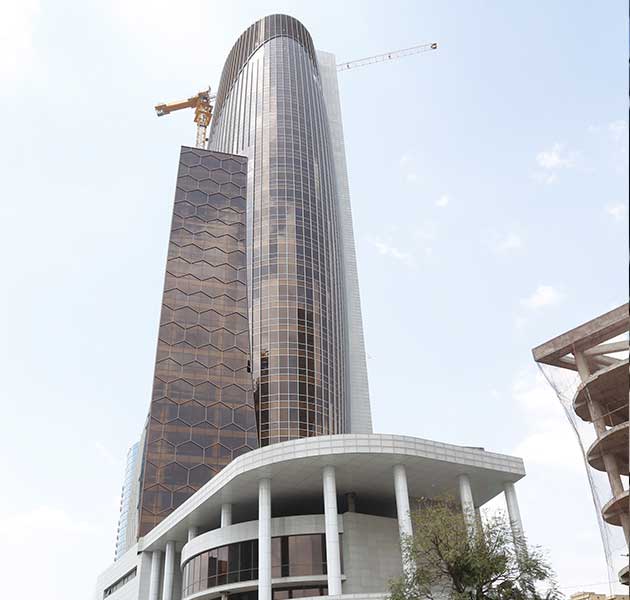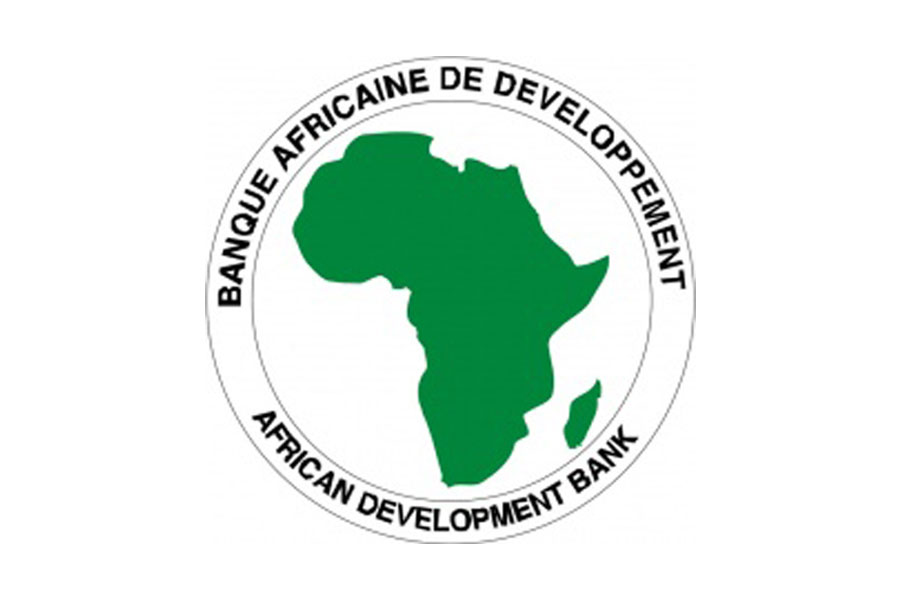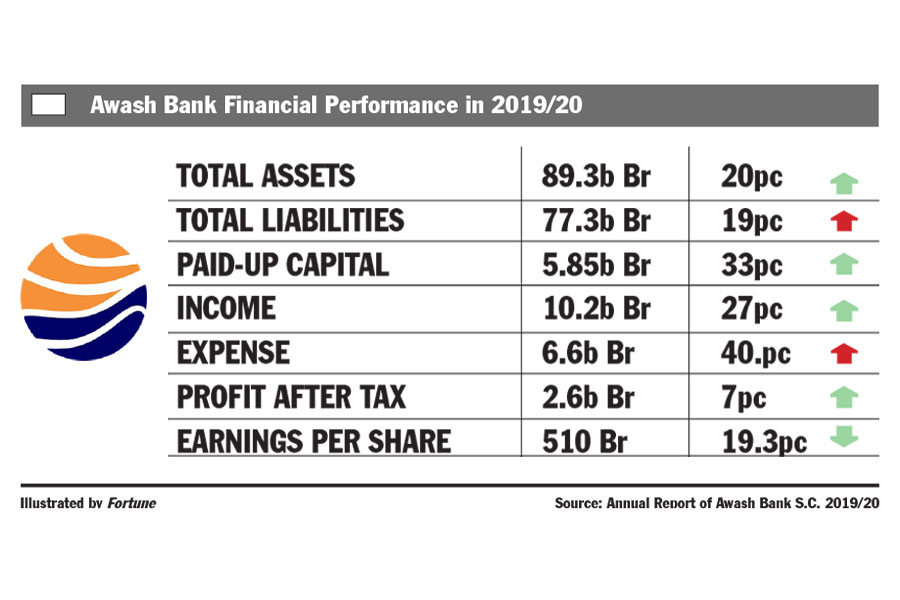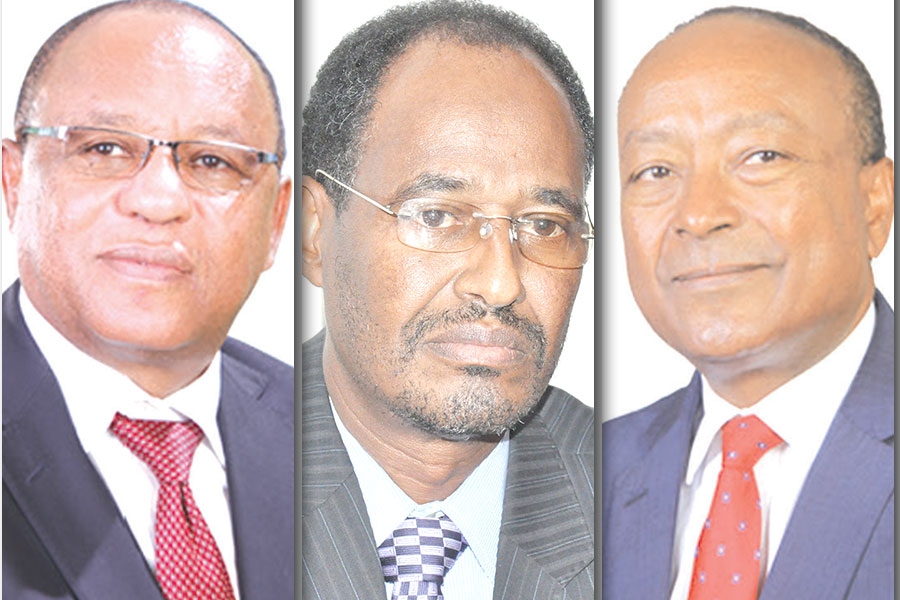
Fortune News | Oct 24,2020
The Bank of Abyssinia (BoA) amassed 1.34 billion Br in net profit from its last year operation, registering an impressive 57pc growth and cementing its position as one of the largest private banks in the industry. The growth is markedly on the 10pc it recorded the previous year when it netted 853.7 million Br.
The Bank managed to move forward at a higher growth trajectory while laying a strong foundation for its future drives, Mekonnen Manyazewal, board chairperson of the Bank, told shareholders who met at the Sheraton Hotel on December 18, 2021.
Mekonnen was a technocrat who had previously served as head of the National Planning Commission, a state minister for Finance & Economic Development, and minister of Industry. He also had responsibilities as a board member at various state-owned enterprises, including the state-owned Commercial Bank of Ethiopia (CBE).
The robust profit growth allowed the Bank of Abyssinia to pay 36pc more in dividends to its 2,400 shareholders. Its earnings per share (EPS), increased to 9.78 Br, has shown a turnaround from a dip to 7.23 Br in 2019/20. Unlike other financial institutions, shares at BoA have a par value of 25 Br.
One of the beneficiaries of the turnaround in returns is Tsadik Habtamu, who inherited part of 1.4 million Br worth of shares from his father along with his two older sisters.
“I didn’t expect bank shares to be worth this much,” said Tsadik.
He owns a little more than 18,600 shares worth close to half a million Br.
Abyssinia`s growth in profit was brought by a surge in revenues from interest-bearing activities. The Bank`s interest on loans, advances and central bank bills soared by 62pc to 7.86 billion Br. The jump was driven by increased lending. Unusual to the banking industry, Abyssinia`s disbursement of loans and advances more than doubled to 75.5 billion Br by the end of the last fiscal year.
Its executives demonstrated prudence in their lending policy. Credit growth was backed by deposits mobilised, reaching 89 billion Br, an 86.6pc increase. However, the loan-to-deposit ratio at Abyssinia Bank grew close to 89pc from 77pc a year ago but shied away from reaching the 90pc ceiling taken as an industry standard.
Pushing the ratio to the limit may bring more interest income, but it is very concerning as it can cause liquidity issues, cautions Abdulmenan Mohammed, a financial statement analyst based in London.
Along with the deposits, the Bank managed to recover almost all of the credit it had disbursed in previous years, according to Dessalegn Yizengaw, vice president for financial management.
“The combination of these factors allowed the Bank to more than double its credit disbursement,” he said.
Liquidity ratios show that the Bank`s liquidity level increased in value and relative terms. Cash and bank balance increased by 90pc to 12.1 billion Br. Liquid assets to total assets ratio slightly expanded to 11.6pc from 11pc, while liquid assets to total deposits ratio rose marginally to 13.6pc from 13pc.
Unlike revenues from financial intermediation, the non-interest-bearing income of Abyssinia showed a mixed performance.
Service charges and commissions increased by a considerable rate of 166pc to 2.44 billion Br. Income from foreign exchange dealings led the Bank to shed 231 million Br. It had suffered losses of 175.3 million Br in the preceding year. Such huge losses in foreign exchange dealings should be concerning, according to Abdulmenan.
A large swell in expenses accompanied the increase in revenues. Interest on savings increased by 48.6pc to 2.69 billion Br while salaries and benefits soared by 76.5pc to 3.23 billion Br. General admiration costs also went up by 66pc to 1.35 billion Br.
“The massive surge in expenses is worrisome,” said the financial analyst. “The management should keep an eye on expenses.”
Under the presidency of Bekalu Zeleke, the Bank's executives do not see a reason to fret.
Bekalu has a brief debut as vice governor of the National Bank of Ethiopia before assuming his current role at the Bank of Abyssinia two years ago. He managed the CBE for over a decade when he was appointed the youngest president in 2009.
“The increase in expenses can be justified by the achievements the Bank made on many fronts,” said Dessalegn.
During the year, the Bank opened 97 new branches and pushed the total number of branches under its network to 608. Its payroll count has also reached 8,146.
Driven by the expansion of loans and advances, the total assets of BoA reached 103.9 billion Br. The share of loans and advances stood at 73pc, while BoA’s investment in central bank bonds accounts for 6.8pc. Its investment in these bonds remained at 7.06 billion Br.
Bank of Abyssinia expanded its capital base to 5.18 billion Br, exceeding the central bank's minimum threshold. Its capital adequacy ratio stood at 10.13pc, slightly above the 10pc regulatory requirement but far lower than the industry average of 18.5pc. According to the financial analyst, the Bank should increase its paid-up capital significantly for precautionary reasons.
The Bank's shareholders have voted to boost paid-up capital to 10 billion Br.
PUBLISHED ON
Jan 01,2022 [ VOL
22 , NO
1131]

Fortune News | Oct 24,2020


Fortune News | Dec 19,2021

Radar | Apr 08,2023

Fortune News | Jun 29,2025

Radar | Aug 26,2023

Radar | Feb 29,2020

Radar |

Fortune News | Dec 05,2020

Fortune News | Feb 09,2019

Dec 22 , 2024 . By TIZITA SHEWAFERAW
Charged with transforming colossal state-owned enterprises into modern and competitiv...

Aug 18 , 2024 . By AKSAH ITALO
Although predictable Yonas Zerihun's job in the ride-hailing service is not immune to...

Jul 28 , 2024 . By TIZITA SHEWAFERAW
Unhabitual, perhaps too many, Samuel Gebreyohannes, 38, used to occasionally enjoy a couple of beers at breakfast. However, he recently swit...

Jul 13 , 2024 . By AKSAH ITALO
Investors who rely on tractors, trucks, and field vehicles for commuting, transporting commodities, and f...

Oct 25 , 2025
The regulatory machinery is on overdrive. In only two years, no fewer than 35 new pro...

Oct 18 , 2025
The political establishment, notably the ruling party and its top brass, has become p...

Oct 11 , 2025
Ladislas Farago, a roving Associated Press (AP) correspondent, arrived in Ethiopia in...

Oct 4 , 2025
Eyob Tekalegn (PhD) had been in the Governor's chair for only weeks when, on Septembe...